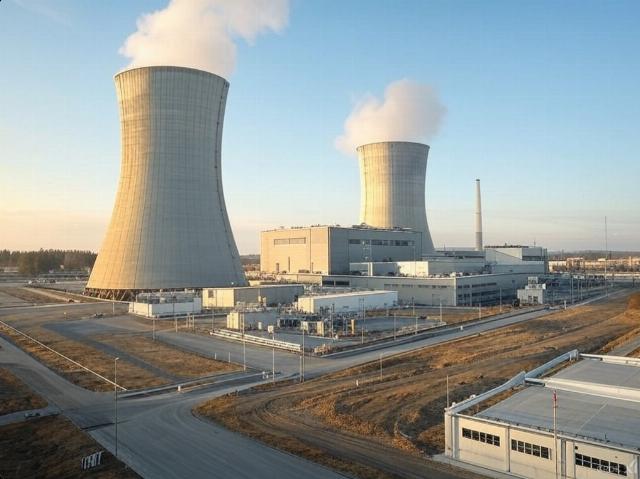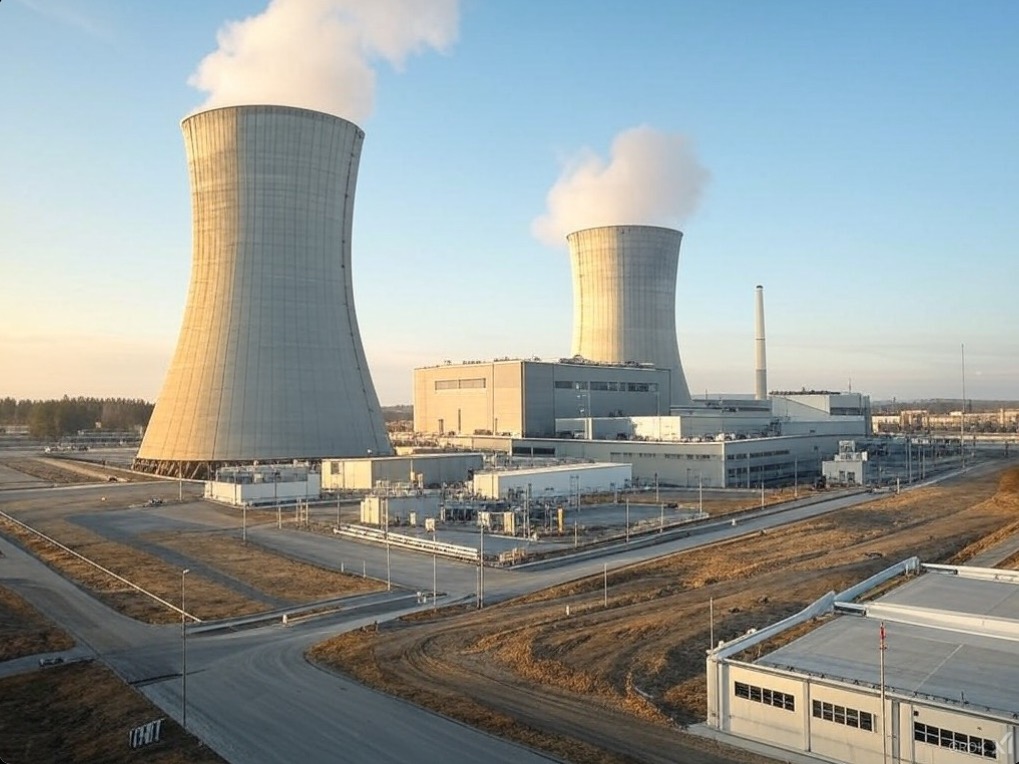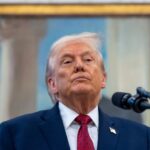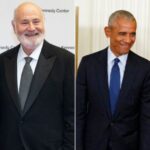

Grok
We've allowed our nuclear power manufacturing capability to atrophy, but that's a short-sighted and dangerous approach that empowers our geopolitical opponents.The loudly announced policy of the new Trump Administration is for the US to regain global “energy dominance.” Most of us would first think, “drill Baby, drill,” so that we can increase our exports of liquified natural gas (LNG). However, there is another energy source that the new administration should encourage, and that is nuclear power. But if the public thinks that means that American citizens working for American companies can now build a complete nuclear power plant either in the US or abroad, they should think again—we can’t. Will future reactor sales go to Russia or China instead?
Americans invented the nuclear reactor and, for decades following World War II, dominated the field globally. With that early national lead and with high global expectations, President Eisenhower offered to share the technology with any country that would forgo using it for nuclear weapons through his “Atoms for Peace” initiative. Many reactor designs were tried out across the globe, but most commercial reactors ended up being built on American light water-cooled designs (LWRs).
As a lack of sales caused many companies to pull out of the market or even go out of business, the impressive supply chains developed to supply the hardware and analysis languished and eventually atrophied. While the nuclear market entered its “long tail” phase (think the vacuum tube market), there was still money to be made and jobs to be had servicing the existing international fleets.
<img alt captext="Grok” src=”https://conservativenewsbriefing.com/wp-content/uploads/2025/02/america-must-can-and-should-renew-its-nuclear-energy-dominance.jpg”>
Image by Grok.
The hard reality is that we lost the ability to be a sole-source nuclear power plant provider long ago. Early aspirants like Allis-Chalmers and General Atomics gave up quickly. The Three Mile Island vendor, Babcock and Wilcox, no longer exists. Combustion Engineering built several large reactors, before being acquired by Westinghouse which also bought Sweden’s ASEA-Atom. Westinghouse, in turn, sold licenses and intellectual property for its designs to the French and to Korea Electric Power Company (KEPCO). Today, Westinghouse is owned by a Canadian company, COMECO, a major international mining company and supplier of yellowcake, the raw material for nuclear fuel.
The other portion of the American duopoly that resulted from the sorting out was General Electric. GE in turn partnered with two Japanese firms, Hitachi and Toshiba, for new reactor designs, before forming an “alliance” with Hitachi to form General Electric Hitachi (GEH) in the US and Hitachi-GE Nuclear Energy in Japan.
The market we are concerned with here are the large reactors, in the gigawatt+ (GW) range. While much has been made of “small modular reactors” (SMRs), the designs that really matter for national energy policy remain the large utility-scale reactors, which have three to five times the output of an SMR. While SMRs should eventually find a market niche and can offer certain safety and technical advantages, the economies of scale are so strong for large and yet larger reactors that the cheapest nuclear electrical generation choice will remain large reactors that we can’t build alone.
President Eisenhower wisely insisted on international controls to keep nuclear commercial applications (like electrical generation) clearly separated from nuclear weapons development. Signing of the Nuclear Non-Proliferation Treaty (NPT) was a commitment both for a nuclear leader to share the peaceful uses of the technology and for recipients to forego using it for nuclear weapons.
To monitor these commitments, the International Atomic Energy Agency (IAEA) was created with its teams of roving on-site inspectors. To import American nuclear technology, the recipient had to enter into an even tighter state-to-state agreement on the scope of the recipient’s nuclear activities called a 123 Agreement.
So, what would future American nuclear energy dominance look like, and how would the Trump Administration encourage it? We must first recognize that the world has changed and that Eisenhower’s promise to share peaceful nuclear technology has succeeded, perhaps to our national commercial detriment. Having acknowledged that fact, how will there be any profit or security for American workers and industry in a new generation of nuclear development?
It is a clear given that “climate change” policy driver that has been behind so much of recent nuclear support amongst the political class will get dumped into the “ashbin of history” by this administration. In reality, it always looked more like a smoke screen. Ask yourself this: Has “climate change“ generated any more nuclear generation on the grid? While the R&D support has been welcome, SMRs and micro-reactors are potential niche products and not panaceas for our global electricity needs.
But how does one sell nuclear reactors today? Plenty of countries are in the market right now as potential buyers. They could choose Russian or Chinese offerings, or they could buy from America and its allies. Selection usually boils down to two factors: financing or proliferation controls—or both.
For example, Saudi Arabia can swing the price but is put off by American insistence that they forgo nuclear enrichment, reprocessing, and weapons as part of a 123 Agreement. So far, no 123 Agreement and no sale. Will American hegemony hold, or do smaller countries see a future where they must go it alone? Most countries resist having America attach strings to their activities by the Americans and, naturally, would prefer greater autonomy.
But the other key to sales is financing. Nukes are very big-ticket infrastructure items, and the cost of money (and availability) for the financial risk involved is critical. Remember all the “zero interest rate” offers for new cars? If faced with two or three equally appealing automobiles, most of us would be enticed by cheap factory financing compared to the more expensive bank loans. Maybe a buyer couldn’t get the car without factory financing at all. That basic behavior applies to countries interested in nuclear reactors, too. It’s just business.
You just can’t sell a nuclear reactor today without liberal financial terms. Even a “well qualified customer” like the UAE got US government financing for its $20 billion Barakah plant. The US Ex-Im Bank put up $2 billion to underwrite the Westinghouse portions of the scope. Additionally, the South Korean government has been reported to put up about half the balance, depending on public reportage. The Canadian government just underwrote $1.2 billion for a Westinghouse AP1000 reactor to be built in Poland.
The US and its allies that wish to promote commercial export sales of nuclear power plants must accept that achieving our policy goals of both a peaceful world and gainful nuclear employment for their citizens will require both maintaining the current non-proliferation regime and offering attractive financing options to their buyers. Some of allies may have been tempted to offer one without the other. Americans and the Trump Administration need to understand that we won’t be able to go it alone but must still lead friendly consortia and support reliable but cash-poor buyers with easy terms. If not American nuclear energy dominance, then expect to see Russian and Chinese reactors sprout across the globe and new nuclear weapons states to arise. Neither is in America’s interests.
Joseph Somsel is a nuclear engineer and an experienced builder/operator of nuclear power plants both domestically and internationally. Making electricity from nukes is his life’s calling. He currently resides in the Philippines and can be reached at Somsel- AT- yahoo.com.





